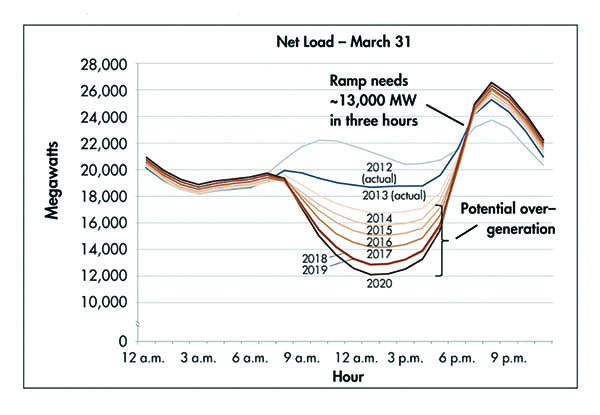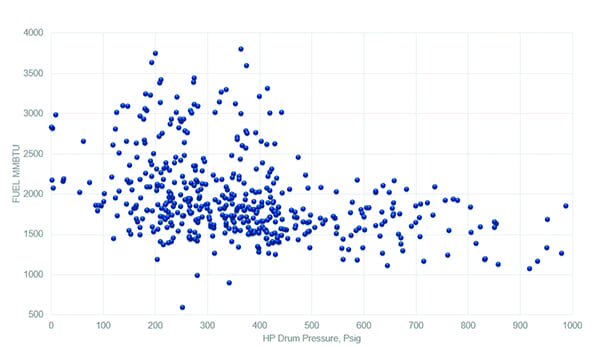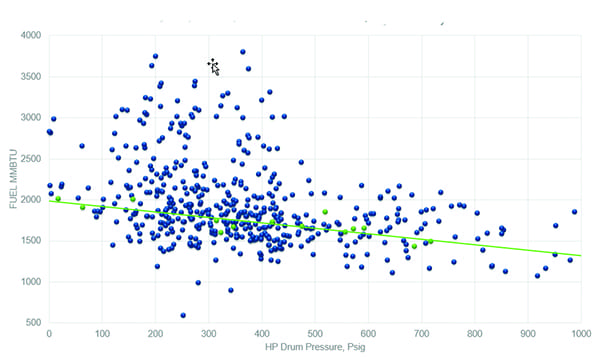Automated Plant Startups Reduce Fixed and Fuel-Related Costs
State-of-the-art automation systems are common at power plants these days. Still, many plants start up units in a very manual way. When startups were rare, the implications were minimal, but as units cycle more frequently, the costs add up. New automation strategies can help reduce not only wear and tear on equipment, but also fuel usage, saving money in multiple ways.
When I was a kid, my family purchased a brand new, state-of-the-art technicolor television with a massive 19-inch screen. We were so excited to be able to watch the 12 channels we received on our rooftop antenna from either New York City or Philadelphia. Being the youngest in the family, I was the designated channel changer. For those too young to remember, it was my lot in life—no, my duty—to get up from my comfy spot, walk to the TV, and crank on the channel knob to tune in another network. In today’s world where I can verbally command Alexa to automatically change to one of the countless streaming channels available, the process of changing channels when I was a kid seems absurd. TV technology has changed, and we’ve changed right along with it.
Now let’s step into the world of starting a power plant. As an industry, we’ve invested in a host of state-of-the-art automation schemes to control generation, yet many plants still insist on a very manual way of starting up their units. Following written procedures, operators typically adhere to a routine of making sure process conditions (permissive conditions) are met, then interact with the site’s automation system, and then proceed to the next step in the startup procedure. Lather, rinse, repeat. At some plants, operators will go through close to 200 manual acknowledgements with their controls as they start up.
Automating Startups Is an Opportunity for Savings
This manual process may have been acceptable when most thermal plants were started up occasionally, but we are no longer living in that era. With the steady growth of renewables, thermal units have had to adjust to a host of new operating regimes that enable utilities to quickly respond to changing generation needs, some starting and stopping several times a week, while others are required to cycle daily.
 |
|
1. The California ISO published “The Duck Chart” in 2013 to show how solar PV was affecting net load on its system. Courtesy: California ISO |
Most people in the power industry have seen the net load curve commonly referred to as “The Duck Chart” (Figure 1). The California ISO raised awareness to the effect increasing amounts of solar PV were having on the power system as far back as 2013. The implication was large for the combined cycle fleet supporting the ISO as many have been increasingly required to cycle and ramp quickly every day.
Beyond the increased maintenance that this operating regime contributes from wear and tear, there is a large impact on the amount of fuel used during these frequent starts, ramps, and shutdowns. This is important as many utilities are evaluating what can be done to improve operations and maintenance (O&M) performance, and fuel savings can be an overlooked opportunity.
 |
|
2. This scatter diagram shows startup fuel usage for a 2×1 combined cycle plant. The fuel used differs considerably depending on the crew performing the startup and other variables. Courtesy: Emerson |
The reality is that startups for a combined cycle facility can vary based on a combination of equipment readiness and operator involvement. Figure 2 shows the variability on startups for a combined cycle plant over time based on multiple shifts manually managing the operations.
As you can see, fuel use varies greatly from start to start. Why is that? Startups are complicated. They require coordination of many interconnected processes, which must be managed in real-time, and quick turnarounds can often challenge operators to complete all required procedures optimally, let alone address any issues from a previous day’s run.
Moving the needle in this area means working with experienced operations teams to efficiently embed current operational best practices within the plant’s automation system. This approach does a couple of things: first, it helps capture and ensure operational best practices are used across the site and shift to shift; and second, it places the operations team in more of a supervisory role.
Assuming equipment is functioning normally, startup performance should be repeatable given similar initial starting conditions. The goal is to minimize per-start variability and maximize the human performance component of site operations. If plant managers incorporate repeatable procedures directly within a plant’s controls, coupled with automated recurring sequential tasks, startup times will be reduced, and the O&M budget will be positively impacted by fuel savings. On top of that, some units are under specific contractual arrangements to meet startup obligations, and automating startups can drive the additional consistency needed to reduce the risk of missing dispatch targets and associated penalties.
Engineering a Better Startup
Advanced plant sequencing achieves this goal. Properly engineered startup sequences optimize and streamline plant equipment starts by automating any manual control room operator actions in accordance with existing startup operating procedures. Desired hold and release times are used to advise operations of the optimal start times for each gas and steam turbine based on current conditions. The automated sequences can then be enabled for optimal load path starts to ensure consistent cycles with minimized fuel usage within the given process constraints. An added benefit of this approach is that the solution framework is flexible and can be easily updated with changes to plant procedures while also allowing for plant intervention for any abnormal circumstances such as a failed piece of equipment.
 |
|
3. This scatter diagram shows startup fuel usage for a 2×1 combined cycle plant after optimizing the control system to automate startups. The fuel used is reduced considerably. Courtesy: Emerson |
Let’s look at a real plant example. Figure 3 shows a scatter diagram from the same combined cycle plant referenced in Figure 2 after it incorporated startup automation. The black line shows the consistency the plant sees with the new automated plant startup integration.
Adopting a more-highly automated operations mindset starts most often with a reassessment of the overall operating philosophy at a site, and it all starts with elevating the role of operations. This is done by allowing the automation infrastructure to manage routine operational tasks such as inserting necessary inputs into the automation system for setpoints, auto/manual status’, and other factors. This puts the operator in a supervisory position and helps them keep an eye focused “down the road” for potential problems while monitoring that the automated process is proceeding as expected.
In using this approach, operators must be presented with information that the automated operations are proceeding properly while helping to warn them of potential issues coming their way. Once operators are comfortable with this type of startup, they are often able to use their experience to optimize the process even further, saving even more fuel and time.
We are all getting comfortable with automating things in our lives, from speaking to the television to tune into your favorite show to getting a text from a credit card company to confirm a charge when traveling, these are the new norms. How we run our plants shouldn’t be different. Putting in place a more-highly automated operations approach is where the rubber meets the road for organizations seeking to unlock value using technology they’ve already invested in at plants. ■
—Doug Morris is director, Power Industry, with Emerson.